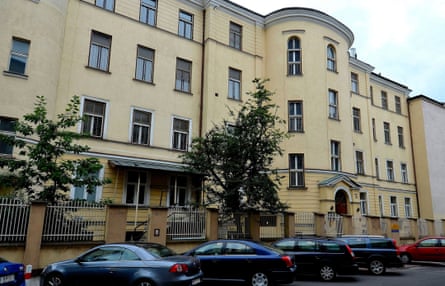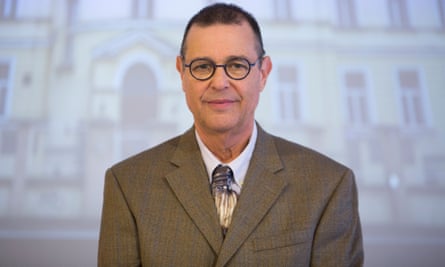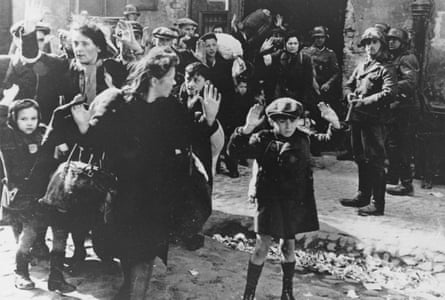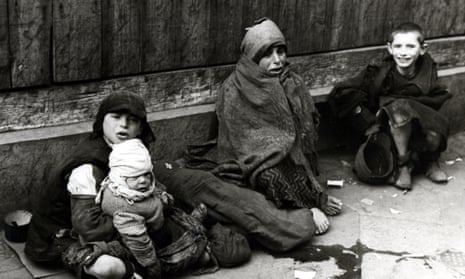The museum of the Warsaw ghetto is not due to open for several years, but is already shaping up to be one of the most contentious museums in Europe.
Backed by Poland’s populist government, which has been accused of rewriting history to fit its political agenda, the museum has caused a bitter spat between historians of the Holocaust about how best to tell the tragic story of Warsaw’s Jews.
On one side is the museum’s Israeli chief historian, Daniel Blatman, who teaches Holocaust studies at the University of Jerusalem, and promises that the exhibits will provide an accurate and thought-provoking look at the formation and liquidation of the Warsaw ghetto, and of the Holocaust in Poland more generally.
On the other side are numerous Polish and Israeli Holocaust scholars who say Blatman is at best being used by the Polish government, and at worst is a willing participant in historical distortions.
Agnieska Haska, of the Polish Centre for Holocaust Research in Warsaw, said it became clear early on that the museum would offer a distorted view of the Holocaust and gloss over instances of collaboration. She pointed out that when launching the museum idea last year, Poland’s culture minister, Piotr Gliński, declared that it would explore the history of “mutual love” between Poles and Jews. She said she respected Blatman as a historian but believed he was being used by Polish authorities to give an Israeli seal of approval to a distorted narrative of the Holocaust.

“We know from the archives that in the spectrum of behaviour towards the Jews, the righteous were the exception, not something that was common. The history of the Holocaust is not a buffet where you can choose which bits you want,” she said.
In an interview at the museum planning offices in central Warsaw, Blatman insisted that the criticism was unfair. He said he had not met any government officials or been given instructions and did not believe that any area of Holocaust history was taboo, saying that “obviously” the museum would deal with Polish antisemitism and instances of collaboration. “There is nothing which is forbidden,” he said.
The Warsaw ghetto was the largest of all the Jewish ghettos in Nazi-occupied Europe, with around 400,000 Jews crammed into a little over a square mile of land. Most were killed, either through execution, starvation or after deportation to concentration camps. The ghetto was razed in 1943 after a heroic but doomed uprising by its inhabitants. Today, the area of the former ghetto is part of central Warsaw, with only a few plaques and small monuments to remind visitors of its dark past.
The museum will be housed in a former children’s hospital, built by Jewish philanthropists in the 1870s. It treated thousands of children during the ghetto period, many for malnutrition and starvation, and most of its patients were eventually sent to their deaths at Treblinka. The doctors chose euthanasia for some of the children rather than see them deported to the concentration camp.
It was one of very few buildings in Warsaw to survive the war relatively unscathed and, after renovations in the 1950s, it again functioned as a children’s hospital until it was closed in 2014. As it awaits transformation into the museum, the building is now closed to the public, the smell of disinfectant lingering in the empty orange-painted corridors. The plan is for the museum to open in 2023, for the 80th anniversary of the uprising.

Blatman said the focus would be on the Holocaust as it fitted into the broader narrative of the war and the Nazi occupation of Poland. “Poles and Jews were both victims. Not equal victims, but both victims of the same tyranny. The concept will focus on the fate of the Jews, not forgetting the other.”
He said that as the first major museum of the Holocaust to be placed on a site where the Holocaust actually occurred, it would naturally have a different focus than Yad Vashem in Jerusalem or the US Holocaust Memorial Museum in Washington DC. “We cannot tell the story of the Jews and the Warsaw ghetto without some hints about what’s going on the other side of the wall,” he said.
His critics are not convinced. Hava Dreifuss, history professor at Tel Aviv University, who for many years worked at Yad Vashem, said she had been asked to work with the museum and had rejected the offer, believing the museum wanted Israeli approval for a museum that leading Polish historians of the Holocaust had refused to work with. She said that by accepting the job, Blatman had “caused damage to leading scholars in the field” and was legitimising a skewed version of history.
“I, like scholars throughout the world, fear that this museum will serve the distorted narrative of the Holocaust which is promoted by the current Polish government,” she said.
Albert Stankowski, the museum’s Polish Jewish director, said he was upset and offended by the reaction among the scholarly community, and insisted that authorities had not made any political demands, nor given any steering over the museum’s content. “If anybody gives any demands I will leave immediately. But already the gossip has started to destroy the project. Historians have said they don’t want to work with us,” he said.
The debates over the museum come at a time when there has been simmering tension over Holocaust memory and antisemitism between the governments of Israel and Poland. Last year, the Polish government was forced to back down after trying to introduce criminal liability for people who refer to “Polish death camps”. However, people who claim the Polish state was “responsible or complicit in” Nazi crimes can still face civil charges.
In February, acting Israeli foreign minister Yisrael Katz said that “Poles suckle antisemitism with their mothers’ milk”, prompting Polish prime minister Mateusz Morawiecki to accuse him of racism and pull out of a planned summit in Jerusalem.
Many Poles feel that the country’s horrific suffering at the hands of the Nazis is overlooked in favour of a focus on the Holocaust and instances of collaboration by Poles. At the same time, the current nationalist Law and Justice (PiS) government has a habit of distorting history to fit its political goals. The director of a second world war museum in Gdansk was sacked in 2017, after a long-running dispute over whether its content was sufficiently patriotic.

Photograph: AP
Additionally, there has been a recent spate of brazen cases of antisemitism in segments of Polish society. In March, a rightwing Polish newspaper ran a front-page “How to spot a Jew” headline, while on Good Friday, people in the town of Pruchnik dragged an effigy of a Jew through the streets before hanging it and setting it on fire.
Blatman said putting the museum into the broader Polish context will help educate a new generation of Poles about the Holocaust: “It will open in five years and will have to speak with Polish society, where there will be hardly any survivors left alive. To make this history relevant to the anonymous teenager in Warsaw who will come in the future to this place, we have to connect it to his history, his city, something that speaks to him.”
The museum has drawn comparisons with the House of Fates, a new Holocaust museum in Budapest that has been completed but has not opened, due to a controversy about how it portrays the events of the second world war in Hungary, where a collaborationist regime deported the country’s Jews, most of whom died at Auschwitz. The current government of nationalist prime minister Viktor Orbán has been accused of glossing over the role of the Hungarian state in the Holocaust.
“It seems that both new museums wish to focus chosen aspects of the Holocaust, neglecting others which might be less convenient to the current local authorities,” said Dreifuss.
